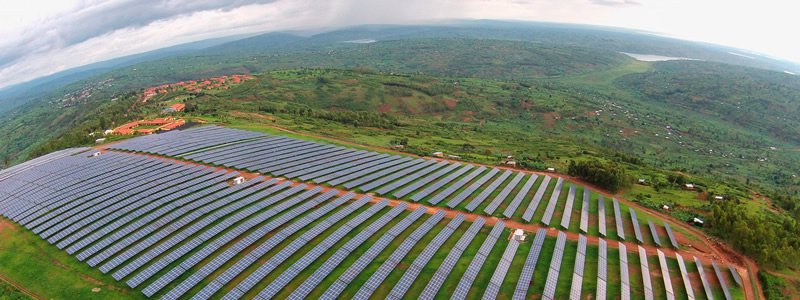
A growing number of solar developers are finding fortune in sub-Saharan African markets beyond South Africa, with Kenya, Namibia and Rwanda among those attracting interest.
Kenya, for example, already has a place within consultancy firm EY’s Renewable Energy Country Attractiveness Index (RECAI), which lists the world’s top 40 markets for renewables investment.
In the most recent RECAI, from September 2015, Kenya ranked 27th for PV and 31st for renewables overall, ahead of Egypt at 35th, Saudi Arabia at 36th and Indonesia at 38th.
One of the attractions of Kenya is that it is among Africa’s larger economies and already has policies in place to support renewables, according to Charl Alheit, chief investment officer at NVI Energy, an African renewable energy services company.
"Kenya and Tanzania have had clear rules in place for distributed renewables for some time now for sizes below 3 MW. And in Kenya [there are] less onerous rules for sizes less than 1 MW," he said.
NVI Energy is exploring and developing commercial and industrial-scale projects in Kenya and Tanzania as well as Namibia, Rwanda and Ghana.
Namibia’s solar energy potential made headlines a year ago with the announcement of Africa’s largest roof-mounted array, a 1.1 MW plant for Namibia Breweries (the world’s 4th largest brewery installation, according to our Top 40).
The biggest grid-connected plant in the country is a 5 MW project in Otjiwarongo, built by Swiss developer HopSol and commissioned in November 2015.
Weldon Turner, chief operations officer for Gigawatt Global Coöperatief, which specialises in grid-connected projects and is eyeing the market, said Namibia is "a wonderful place with great people, lots of land, lots of sun. It has a lot of promise."
Like NVI Energy, Gigawatt Global also has a focus on Rwanda, where it has built a 8.5 MW project.
The plant was developed in just two years, from literally "walking into the country" to connecting to the grid, thanks to competent and willing country partners.
"They were extremely professional and it was something that they wanted to do," Turner said. “And the financing partners wanted it and were willing to move quickly. That was a perfect situation.”
However, small grids mean there are limits to how many projects a developing country such as Rwanda can absorb. Gigawatt Global’s project has already catapulted solar power to cover 6% of Rwanda's entire grid supply.
As a result, the best long-term bets for solar development in sub-Saharan Africa are likely to be the larger countries such as Nigeria and Ethiopia, Africa’s two most populous nations.
Gigawatt Global is currently working on pre development of a 135 MW project in Nigeria, where 195 million people currently share less than 7 GW of power generation, mostly from diesel.
And Turner sees potential in Ethiopia because it has a robust main transmission grid to supply large industrial power users, making it a more straightforward matter to connect solar projects on smaller distribution lines that serve rural households.
Ethiopia also has a good base level of infrastructure serving universities and industries, plus an educated population with sizable professional class of engineers and lawyers.
Like many other sub-Saharan markets, Ethiopia is not without its problems, including high levels of poverty. But overall across the region, solar developers should not ignore the fact that countries are opening up for business.
Said Alheit: "Many East and West African countries have taken the lead on in separating transmission, distribution and generation, although with varied success.
“These steps are an important move forward creating the right environment for distributed generation and putting the right policy and framework in place for the smart grid of the future."
